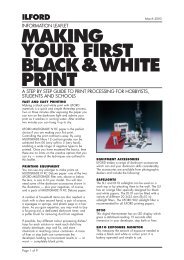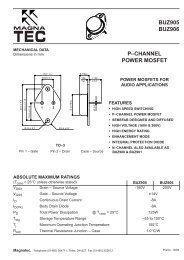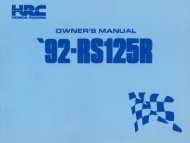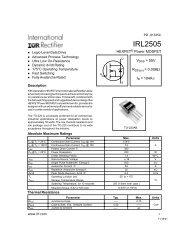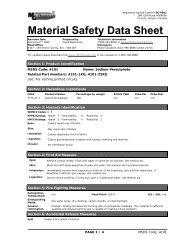SWITCHMODE⢠Power Supply Reference Manual
SWITCHMODE⢠Power Supply Reference Manual
SWITCHMODE⢠Power Supply Reference Manual
Create successful ePaper yourself
Turn your PDF publications into a flip-book with our unique Google optimized e-Paper software.
SMPSRMIn this design, both the power switch and the catchdiode operate in a zero current switching mode. <strong>Power</strong> ispassed to the output during the resonant periods. So toincrease the power delivered to the load, the frequencywould increase, and vice versa for decreasing loads. Intypical designs the frequency can change 10:1 over theZCS supply’s operating range.The ZVS is a fixed off–time, variable on–time methodcontrol. Here the initial condition occurs when the powerswitch is on, and the familiar current ramp is flowingthrough the filter inductor. The ZVS quasi–resonant buckconverter is shown in Figure 32. Here, to control thepower delivered to the load, the amount of “resonant offtimes” are varied. For light loads, the frequency is high.When the load is heavy, the frequency drops. In a typicalZVS power supply, the frequency typically varies 4:1over the entire operating range of the supply.There are other variations on the resonant theme thatpromote zero switching losses, such as full resonantPWM, full and half–bridge topologies for higher powerand resonant transition topologies. For a more detailedtreatment, see Chapter 4 in the “<strong>Power</strong> <strong>Supply</strong>Cookbook” (Bibliography reference 2).L RL OC RDV inC inCONTROLV I/PFEEDBACKC outV outA ZVS Quasi–Resonant Buck ConverterV inV I/P0POWER SWITCHTURNS ONV in V outI PKL R L OI SWV in0I LOADI DL RFigure 32. Schematic and Waveforms for aZVS Quasi-Resonant Buck Converterhttp://onsemi.com31



